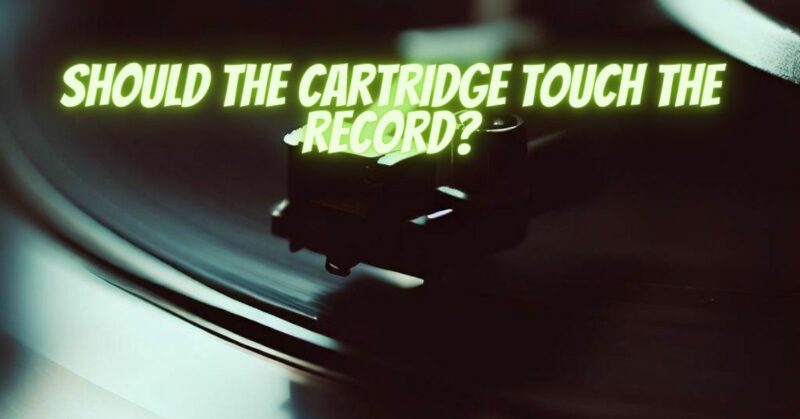When setting up a turntable, one critical factor to consider is the stylus tracking force—the amount of weight applied by the cartridge’s stylus on the vinyl record’s grooves. Proper stylus tracking force is essential for achieving optimal sound quality and protecting your precious vinyl records from unnecessary wear. In this article, we will delve into the significance of stylus tracking force, whether the cartridge should touch the record, and the best practices to ensure accurate tracking and superior vinyl playback.
Understanding Stylus Tracking Force:
The stylus tracking force, also known as stylus weight or downforce, refers to the amount of pressure exerted by the cartridge’s stylus onto the surface of the vinyl record. The stylus needs to make sufficient contact with the record’s grooves to trace the musical information accurately. However, excessive tracking force can lead to groove wear and potential damage to the record, while insufficient tracking force may result in tracking errors and distorted sound.
Should the Cartridge Touch the Record?
Yes, the cartridge’s stylus should lightly touch the record’s grooves during playback. However, the amount of tracking force applied should be carefully adjusted to avoid excessive wear or tracking issues. The ideal tracking force depends on the specific cartridge model and is usually specified by the cartridge manufacturer. Typical tracking force values range from 1.5 to 2.5 grams, with some cartridges requiring higher or lower values.
Best Practices for Setting Stylus Tracking Force:
- Consult the Cartridge Specifications:
Always refer to the cartridge manufacturer’s specifications to determine the recommended tracking force for your specific cartridge model. These values are critical for proper stylus setup.
- Use a Digital Scale:
To set the tracking force accurately, use a digital tracking force gauge specifically designed for this purpose. Avoid relying solely on turntable dials or counterweights, as they may not provide precise measurements.
- Start with the Minimum Tracking Force:
Begin by setting the tracking force to the minimum recommended value for your cartridge. This helps prevent excessive wear on your records during the setup process.
- Listen and Observe:
After setting the minimum tracking force, listen for any tracking issues or distortion during playback. Pay attention to channel balance and any signs of mistracking. Adjust the tracking force slightly in small increments until you achieve the best sound quality and playback performance.
- Avoid Excessive Tracking Force:
Do not exceed the cartridge manufacturer’s maximum recommended tracking force. High tracking force can cause premature wear on the record grooves and damage your vinyl collection.
- Consider Anti-Skate Adjustment:
Proper anti-skate adjustment is crucial for accurate tracking. Ensure that the anti-skate force matches the stylus tracking force to maintain a balanced tonearm during playback.
Setting the proper stylus tracking force is a critical aspect of turntable setup for achieving optimal sound quality and preserving your vinyl records. While the cartridge’s stylus should touch the record, it is essential to use the recommended tracking force specified by the cartridge manufacturer. By following the best practices and fine-tuning the tracking force, you can enjoy an immersive vinyl listening experience with accurate tracking, minimal distortion, and extended record longevity. Taking care to set the right tracking force will not only enhance your vinyl playback but also ensure that your vinyl collection remains in pristine condition for years to come.


